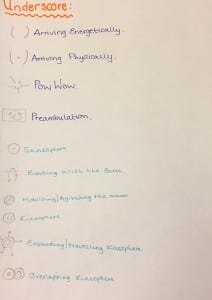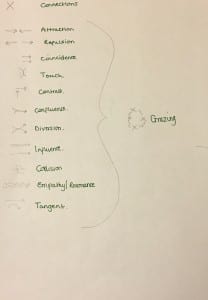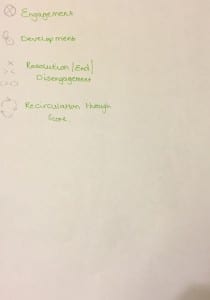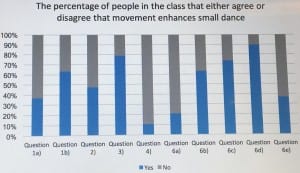I cannot believe this was the final lesson of such a hard yet creative and enjoyable module, as I mentioned in my first blog I thought I was going to struggle and not make the most of my time in this class. There were many ups and downs during the whole process, but most of all I feel like I have become a more confident dancer, with lots of tools and devices to use when it comes to dancing and choreographing, I also bought the skills that I learnt from last year’s Improvisation module to expand my knowledge. It has been a difficult ten weeks to understand that the movements I have been doing since the age of three years old at a private dance school were classed as habitual movements and I had to move away from them and do things I had not experienced before. I had to learn how to place my weight on someone and were to change my weight to, to work with different people in the class and to also find resistance, momentum and fluidity, to keep the contact I had already created. We also had to learn how to keep, not just our own bodies safe in the space, but the people who we work with, this was difficult at the start of this module as we were not able to read peoples bodies, so we were unable to know what was going to happen, unfortunately until I became confident with the class I stayed with playing it safe, but when you do this the movements become habitual as that is what I know.
For this lesson, we had ten photography students and our second marker in the space with us, we normally struggle for space with twenty-six of us, but it felt no different. The first half of this lesson was thinking about becoming aware of our bodies and the other bodies in the space, starting to create relationships using eye contact then moving onto small movements with the people we make eye contact with. The next exercise we did was 1, 2, 3 fall, when we first did the exercise everyone was apprehensive of letting their weight go and trusting the class. This week we were told to shout ‘1, 2, 3’ when we liked and everyone in the class was so brave, I wish I had done it however I was in a lot of pain with my back and struggled to move properly. I am unable to comment on the second half of the lesson as I cannot reflect on how it affected me and my body as I was told to sit out, as much as I did not want to I had to as I had other assessments to do that week, which were only based on that one lesson, whereas this module we have been assessed every week.
The whole process of Contact Improvisation has changed my attitude to try new things and experience movements or lifts that I am not comfortable doing. I learnt that CI is a good way to let out all your internal aches and pains, as you can experiment by twisting, turning, pulling and pushing, into each other and even the floor. Everything I have learnt throughout this module will definitely stay with me for the whole of my dance life, they are all tools well learnt.



